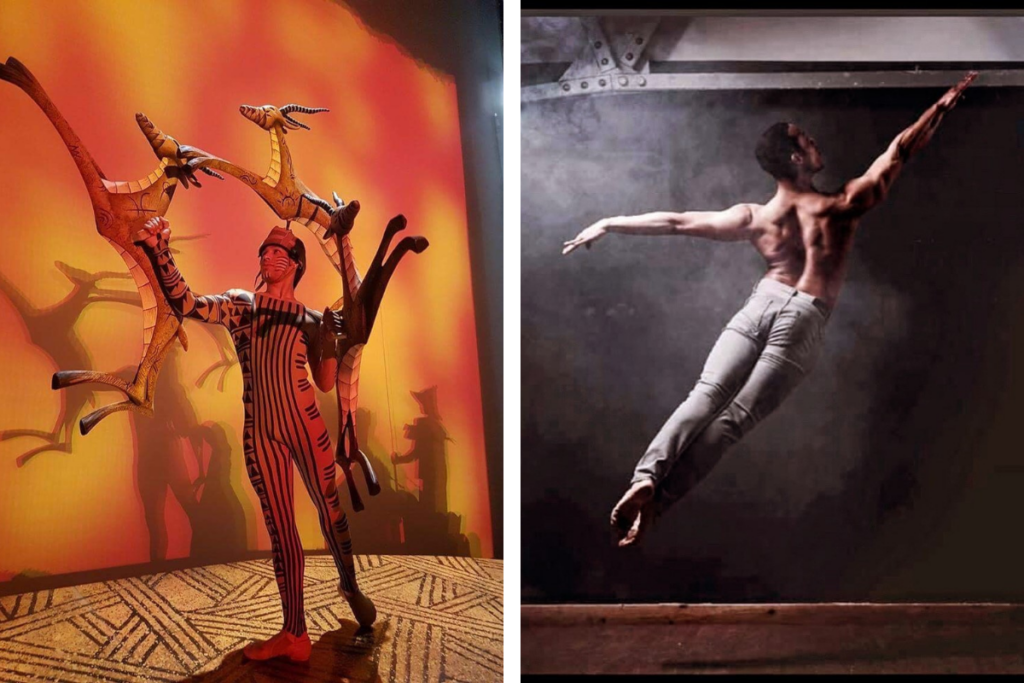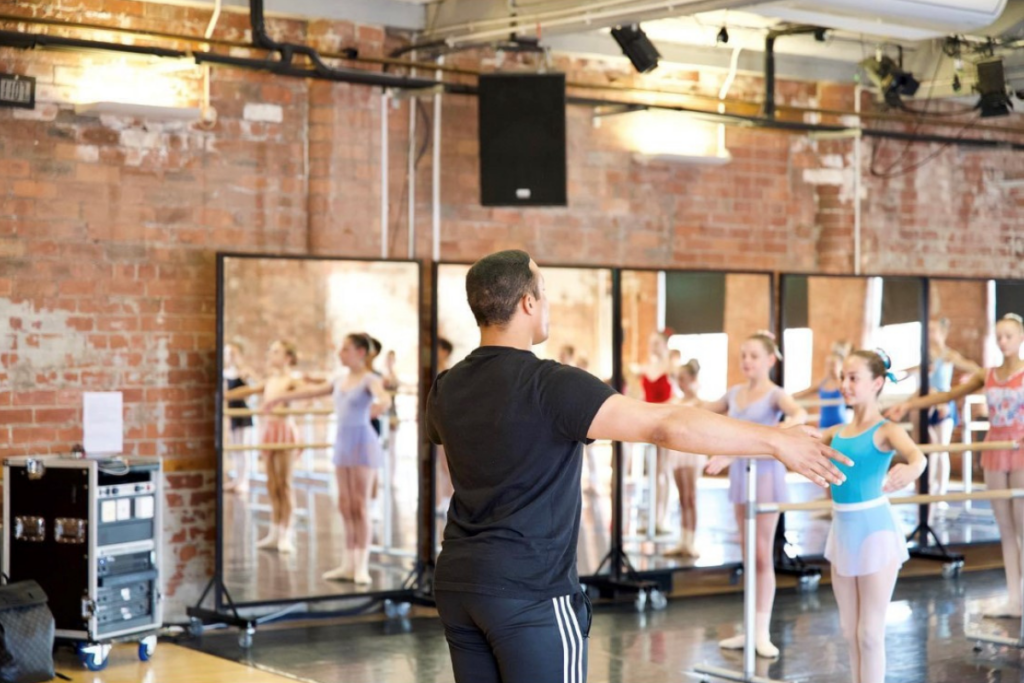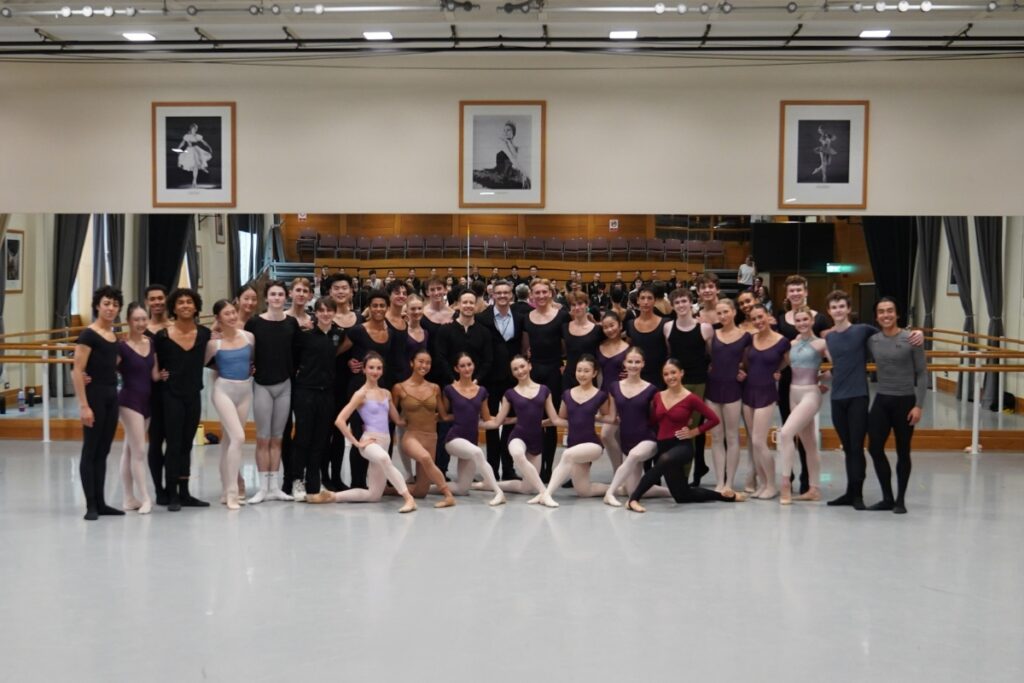In conversation with DDT graduate Mark Hindle
Mark Hindle has had an exciting career as a professional dancer, gracing the theatre and cruise ship stages in numerous productions and events, including The Classical Spectacular at The Royal Albert Hall London, The Dutch Musical Gala, and The Lion King and Pirates of the Caribbean for The Queens Jubilee Concert.
Last year, Mark graduated from The Royal Ballet School’s Diploma of Dance Teaching (DDT), equipping him with skills to teach classical ballet at vocational and pre-vocational levels to a world-class standard. We spoke with Mark about his experience training with The Royal Ballet School and asked him to share advice for those considering taking the first step towards a fulfilling career in dance teaching.
Can you tell me about your background in dance?
I was lucky enough to attend Northern Ballet School in Manchester for three years of intensive vocational training in many styles. After graduating, I spent some time traveling the world on ships as a production dancer, and I then spent some time in the Middle East performing in touring musicals. I returned to the UK and performed in some of the UK’s leading theatres, including Leicester Curve and the Royal Albert Hall. I then moved into dancing in the West End and performing in the opening for the Dutch Musical Gala.

What drew you to teaching dance? And what inspired you to train with The Royal Ballet School?
The prospect of training at one of the world’s best schools was intimidating and exciting. I looked around at several teacher training courses, and The Royal Ballet School seemed like the right fit. I found most places that offered training had a strict syllabus, which is wonderful if that is the route you want to take. However, I liked that The Royal Ballet School offers autonomy to their teachers in training, and they allowed us to create our own content, which is massively important because it allows one to be able to teach the students that are in front of them to maximum effect.
How did you find the Diploma of Dance Teaching course?
I found it exceedingly challenging, but it is what I needed; otherwise, I would not be the teacher I am today. The course is taught in such detail, and we were constantly monitored to ensure we were progressing the way we should have. Equally, it was immensely helpful knowing there was a great system of support.
What was your favourite aspect of the course?
I would have to say the art of teaching; it is fine to have a vast amount of knowledge, but the [DDT] course helped me articulate how to get that knowledge to the students so that I can now enhance their learning experience.
It sounds cheesy, but it is well known the later on in life we get, the harder it becomes to expand one’s friendship circle. Participating in the course has allowed me to build some incredibly special friendships, which I will value forever, and it makes me proud to see how well my cohort is doing and what they are doing for their students.
Is there one key learning that stuck with you throughout the course?
I could not write down what I learned as it was endless, and doing the course has given me the bug of wanting to continue to learn and develop my teaching practice. One thing that has stuck with me is that I cannot teach my classes without a clear outcome; learning outcomes make my life and the students’ time in the studio much easier. Classical ballet is overwhelming, but having clarity of your expectations of the students in that class really helps measure their progress.

What might people not know about the DDT course?
I feel with the expectation of it being The Royal Ballet School, the course was just going to be centered around classical ballet, but it is so much more than a tendu or a plié. The course pushes you to be an excellent teacher and to think creatively to reach every student and meet their learning needs. I liked how the course shone a light on how I was teaching, and I quickly learned that the students need to be more involved in their learning. The studio must be an interactive learning space for all, and we must allow dancers to have voices. The course also has a psychology module, which is hugely beneficial as it enables teachers to understand what their students can and cannot do throughout their development stages.
What have you been up to since finishing the course?
After completing the course, I have been inundated with work, for which I am so grateful. I have delivered company class for Phoenix Dance Company, taught for the Yorkshire Ballet Seminars, led auditions for The National Youth Ballet of Great Britain, and have been invited back to do the same next year. I currently teach at two vocational dance schools; I have lectured for British Theatre Dance Association, Rosina Andrew’s Method, and I will lecture for Can You Dance Convention in the New Year. I am involved in the Dance World Cup, which allows me to adjudicate talent from over 60 countries in Croatia and Portugal. I now also teach for The Royal Ballet School as a Senior Associate teacher, and I can honestly say such opportunities never would have been warranted without doing the course.
Finally, can you share any advice for fellow teachers?
As teachers, we want our students to strive for excellence; I say let that excellence start with us! Take the time to explore different avenues so we can offer our students the best learning experience. Dance is constantly evolving, as are the students who come to our studios, and we need to change with that.
If you are considering The Royal Ballet School’s DDT course, I say absolutely go for it. Make sure you can fully commit to getting the maximum out of the course, as it is so rewarding and will challenge you in ways you did not think were possible.
It is not over once the course is completed, as the tutors are very warm and open. If I need help or assistance, I still email Teacher Trainer Manager Sarah Daultry, who is incredibly kind and supportive. I still believe the course is ahead of its time.
Applications are currently open for our Diploma of Dance Teaching. To find out more about the course and apply, click here.





